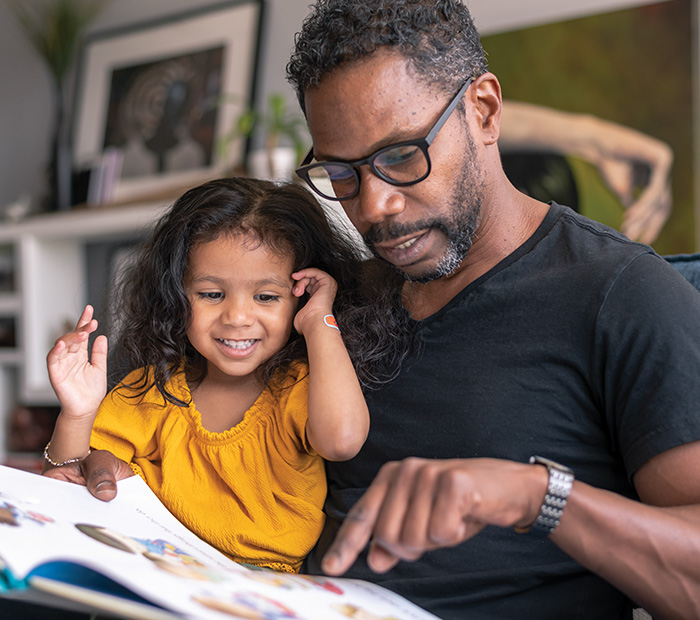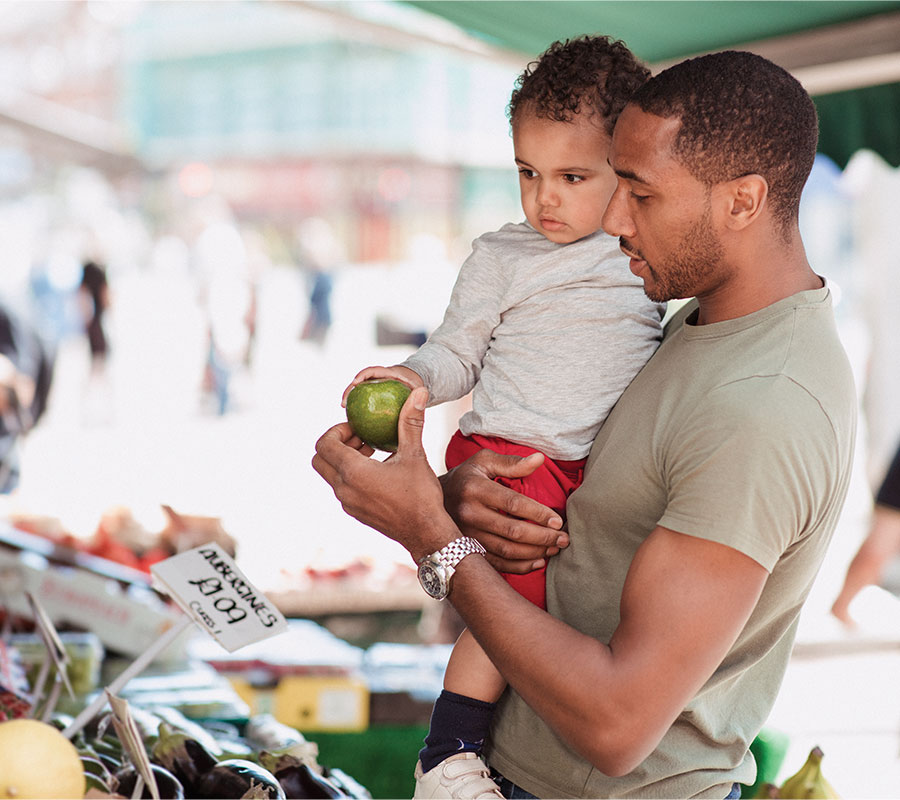
Fun at the Farmers’ Market
- Home
- Live Well Blog
- Fun at the Farmers’ Market
Fun at the
Farmers’ Market
A trip to the local farmers’ market is a fun family activity that can be exciting for young children. With a festival atmosphere, kids will enjoy the sights, smells, colors, crafts and music that are often a part of the market.
Benefits
Choosing locally grown food for your family can benefit your health, the environment and the local economy. Fresh farm produce is loaded with nutrients. Best of all, freshly harvested fruits, vegetables and herbs are bursting with flavor!

Finding a Market
New farmers markets are sprouting up everywhere. From cities to small towns, just about everyone has access to a market for at least part of the year. To locate a market where you live, visit www.ams.usda.gov/local-food-directories/farmersmarkets.

Before you Go
Consider reading to your children about farmers’ markets. These books will help your children learn more about vegetables and how they are grown.
- Up, Down, and Around Candlewick Press. Ayres, K. (2007)
- Growing Vegetable Soup Voyager Books. Ehlert, L. (1990)
- Tops & Bottoms Harcourt Brace & Co. Stevens, J. (1995)
AT THE MARKET
You can make the most out of your purchase by looking around and visiting several vendors before you decide what to buy. For instance, buying smaller amounts of several items can help prevent food waste once you get home.
Engage your little ones by looking for different colors, shapes, sizes and flavors.

Here are a few games you can play as you walk around the market:o
- Go on a scavenger hunt, asking your children to find foods that are red, green, orange, long, round, sweet or that grow above or below the ground.
- Ask your children to find foods that are new and different such as blue potatoes, red carrots or long white radishes.
- Play “I spy”. Ask them to guess an item that you spot by describing the color, shape and taste.
- Challenge your children to find a rainbow at the market, including foods that are yellow, orange, red, blue, purple, green and white.
At the SPRING Market
You’ll find cool weather vegetables such as:
- Kale
- Asparagus
- Spinach
- Beets
- Arugula
- Parsley
- Cauliflower
- Lettuce
- Broccoli
- New potatoes
- Radishes
- Artichokes
- Carrots (and other root vegetables)
- Chives
- Snap peas
- Spring onions (also called scallions or green onions)
- Chard
Depending on where you live, you may see fruits such as:
- Grapefruit
- Strawberries
- Rhubarb
- Cherries
- Lemons
- Kiwifruit
- Navel oranges
- Apricots